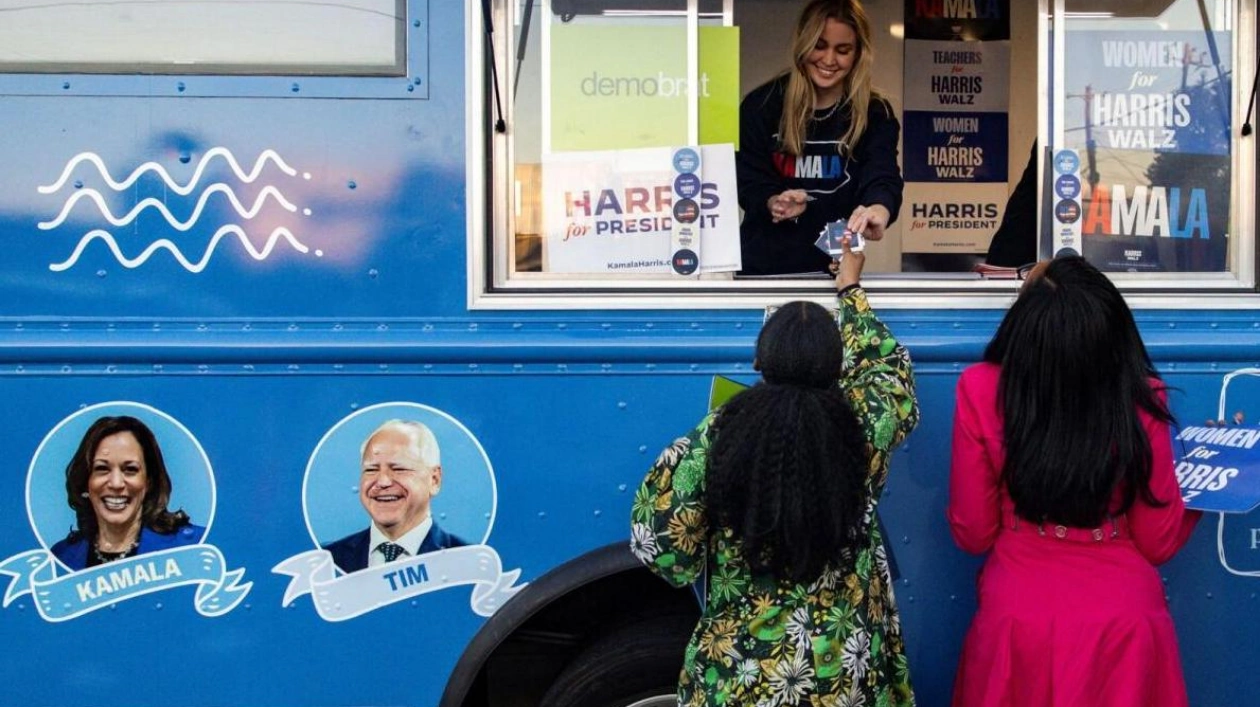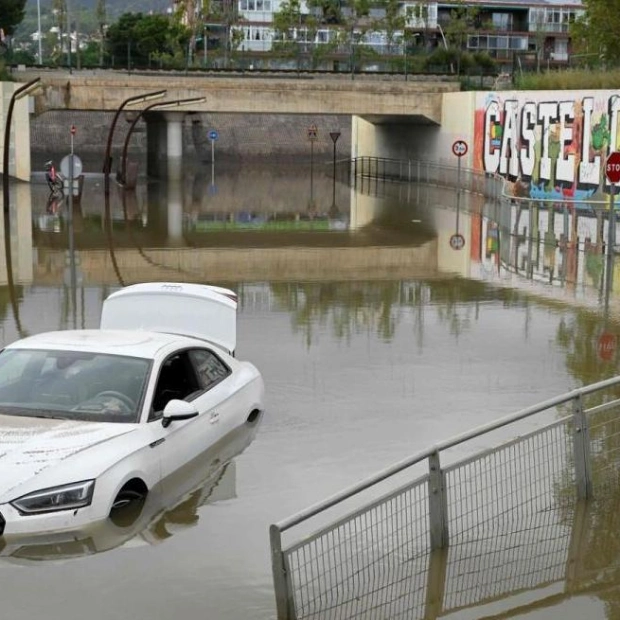Supporters of the Democratic presidential nominee receive stickers in support of Harris outside a campaign rally at The Alan Horwitz 'Sixth Man' Centre in Philadelphia. – Reuters
Swing states, electoral college votes, candidates across various positions, and millions of potential voters: here is the US election, dissected by numbers. Several independents ran -- and at least one, Robert F. Kennedy Jr, found himself in the midst of several eyebrow-raising headlines. However, the presidential race ultimately boils down to a binary choice, with the two major party candidates -- Democrat Kamala Harris and Republican Donald Trump -- vying to lead a deeply divided America.
November 5 -- Election Day, traditionally held on the Tuesday following the first Monday in November. The number of swing states -- those which don't clearly favor one party over the other, making them competitive. Harris and Trump are focusing their campaign efforts on Arizona, Georgia, Michigan, Nevada, North Carolina, Pennsylvania, and Wisconsin, aiming to secure victory. In a closely contested election, just a few votes in any of these states could determine the outcome.
On Election Day, voters will not only decide the occupant of the White House but also reshape the US Congress. Thirty-four Senate seats and all 435 House of Representatives positions are up for grabs. In the House, members serve a two-year term. Republicans currently hold the majority, and Harris's Democrats are hoping for a shift. In the Senate, 34 out of 100 seats are available, each with a six-year term. Republicans are aiming to overturn the slim Democratic majority.
Welcome to the Electoral College, the indirect system governing presidential elections in the United States. Each state has a different number of electors -- calculated by adding the number of their elected representatives in the House, which varies according to population, to the number of senators (two per state). For example, rural Vermont has just three electoral votes, while giant California has 54. There are 538 electors in total across the 50 states and the District of Columbia. To win the White House, a candidate must secure 270 votes.
The number of poll workers who volunteered to ensure the smooth running of the 2020 election, according to the Pew Research Center. There are three types of election staff in the United States. The majority are poll workers -- recruited to greet voters, assist with language barriers, set up voting equipment, and verify voter IDs and registrations. Election officials are elected, hired, or appointed to perform more specialized duties such as training poll workers, according to Pew. Poll watchers are typically appointed by political parties to observe the ballot count -- expected to be particularly contentious this year due to Trump's refusal to unconditionally accept the result. Many election workers have already spoken to AFP about the pressure and threats they are facing ahead of the November 5 vote.
Harris's team spent $270 million on her campaign in September, while Trump's spent significantly less -- only $78 million, according to official filings. The New York Times reports that Harris's campaign set a record for the largest fundraising quarter ever this fall, raising $1 billion since she entered the race following Joe Biden's withdrawal in July.
The number of Americans eligible to vote in 2024, according to the Bipartisan Policy Center. How many of these will actually cast their ballots remains uncertain. However, the Pew Research Center notes that the midterm elections of 2018 and 2022, along with the presidential vote of 2020, produced three of the highest turnouts in the United States in decades. 'About two-thirds (66%) of the voting-eligible population turned out for the 2020 presidential election - the highest rate for any national election since 1900,' Pew states on its website. This translated to nearly 155 million voters, according to the Census Bureau. As of October 27, more than 41 million Americans had already voted early, according to a University of Florida database. Most US states allow in-person or mail-in voting to accommodate scheduling conflicts or inability to vote on Election Day, November 5.
Source link: https://www.khaleejtimes.com






